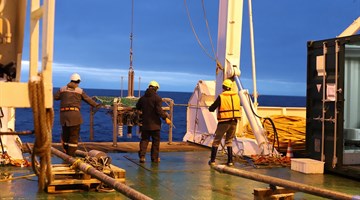TOMSK, Nov 23 – RIA Tomsk. Scientists of Tomsk Polytechnic University (TPU) will develop a robotic device that will allow monitoring the quality of welds on the cooling systems of the world's first thermonuclear reactor, which is being built in the south of France, the university's press service reported on Monday.
Earlier it was reported that TPU entered the project to create a robotic ultrasonic system for checking the quality of parts of the world's first thermonuclear reactor, which is being built in the south of France within the framework of the International Thermonuclear Experimental Reactor (ITER) project. Tomsk Polytechnic is the contractor of Scientific Research Institute of Electrophysical Apparatus named after D.V. Efremov JSC (NIIEFA), the contract value is 70 million rubles.
As the press service clarifies, ITER is a large-scale scientific project and almost every detail for it is a challenge for scientists. Much that is being done within its framework today by developers from different countries is being created for the first time. Welded joints on reactor parts are a special risk area, even the smallest defects endanger the safety of the entire site.
"TPU specialists will develop a robotic system for quality control of welded seams on the elements of the cooling system manufactured for the ITER thermonuclear reactor. This international project is called the largest in the history of mankind in the field of energy", - the report said.
© с сайта ТПУ
It is specified that the welds on the radiators created for the ITER have a peculiarity - they are very thin, 1 millimeter thick. Traditional methods (ultrasonic and X-ray) are not suitable for their control due to the combination of requirements for the operating conditions of radiators, speed and sensitivity of control. Therefore, polytechnics will use the eddy current method. To make a system according to all requirements, TPU uses their own solutions.
"The inspection system will consist of a robotic manipulator, an optical profilometer and an eddy current flaw detector. The profilometer will use a laser to create an accurate profile of each weld, and they all have their own characteristics. This will help the eddy current flaw detector to move accurately. cracks, pores in the welds", - the head of the TPU Engineering School of Non-Destructive Testing Dmitry Sednev is quoted.
It is explained that the eddy current method is an electromagnetic control method. Its essence lies in the fact that a miniature coil is superimposed on the part, which creates eddy currents (Foucault currents). They, in turn, create a magnetic field in the material of the part. This magnetic field changes its parameters at the site of the defect. From these changes, one can accurately determine, for example, the location and size of the defect.